"The best thing about painting outdoors is that all of your senses are alive and active" Mel Stabin*
Leave painting gear by the door
The key to painting or sketching outdoors regularly is having your supplies always ready to go at any moment. I have a variety of back packs that I leave visible in my studio at the ready. Some are partly filled and some are empty. Even better, I leave some by the front door.
Bringing less is more
The greatest deterrent to getting out the door to paint is thinking that one needs to bring a lot of painting supplies. I have seen students bring almost every item from their studio. I soon realized when I started working outdoors years ago that it is more important to observe, draw and paint than to return home with a finished product. If I come back with a watercolor ready to be framed then that is an added bonus but not a necessity. I paint outdoors because I enjoy the “process”. Bringing only the bare necessities gets me out the door more often.
Working close to the ground
I’ve been “caught on camera” painting in various places and situations. Because I love plein air painting and sketching, I am not likely to be deterred by weather conditions unless they are too severe. I prefer sitting as close to the ground as possible whenever I paint. I place my palette, water container and brushes on the ground. This eliminates the need for a table.
Tips on painting and sketching outdoors
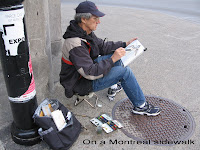 2. Simplify the size and amount of equipment when working in the city. Work on smaller format paper or canvas. There is an advantage to sitting low to the ground – no table needed.
2. Simplify the size and amount of equipment when working in the city. Work on smaller format paper or canvas. There is an advantage to sitting low to the ground – no table needed.3. When cold, a good wind-proof shell or jacket is a must. Set your back to the wind and you’ll survive seemingly cold temperatures.
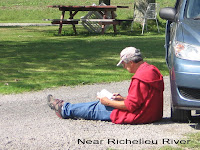 4. It isn’t necessary to always sit on a stool especially if sketching. Get used to getting the “bare bones” of the drawing down fast – the important lines. Then, retreat to the comfort of your car to complete the sketch or painting if necessary.
4. It isn’t necessary to always sit on a stool especially if sketching. Get used to getting the “bare bones” of the drawing down fast – the important lines. Then, retreat to the comfort of your car to complete the sketch or painting if necessary.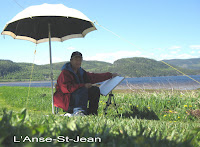 5. Although it is sometimes complicated to install a painting umbrella, it is well worth the trouble to avoid painting in direct sunlight.
5. Although it is sometimes complicated to install a painting umbrella, it is well worth the trouble to avoid painting in direct sunlight.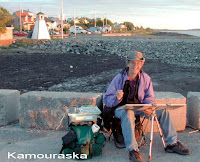 7. There is usually a scene waiting to be painted from any wharf. However, it is usually windy by the shore so stay low.
7. There is usually a scene waiting to be painted from any wharf. However, it is usually windy by the shore so stay low.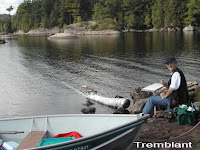 8. The opportunity to boat to a painting location is truly one of most wonderful of gifts for the outdoor painter.
8. The opportunity to boat to a painting location is truly one of most wonderful of gifts for the outdoor painter.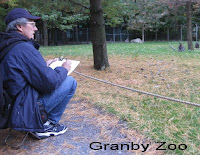 9. Everything is paintable. Challenge yourself to draw or paint animals on site when possible. If they move, start another, then another…
9. Everything is paintable. Challenge yourself to draw or paint animals on site when possible. If they move, start another, then another… 10. Sit by a country road and you will most often see an instant composition. The road creates a natural passage into the composition. Protect your eyes with sunglasses when necessary.
10. Sit by a country road and you will most often see an instant composition. The road creates a natural passage into the composition. Protect your eyes with sunglasses when necessary. 11. A rock ledge makes for a good seat for sketching. However, bring along a small pillow if you intend to stay for any length of time.
11. A rock ledge makes for a good seat for sketching. However, bring along a small pillow if you intend to stay for any length of time.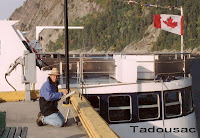 12. While waiting for the ferry to depart, sketch. Draw kneeling if that is where the best view point is. Get down the essentials and finish the sketch/painting on the boat from memory.
12. While waiting for the ferry to depart, sketch. Draw kneeling if that is where the best view point is. Get down the essentials and finish the sketch/painting on the boat from memory.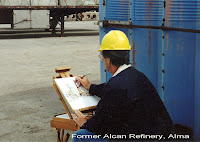 13. My friend Helmut and I were permitted to paint inside the Alcan refinery but we had to wear hard hats. A head cover of any kind is a must for the outdoor painter.
13. My friend Helmut and I were permitted to paint inside the Alcan refinery but we had to wear hard hats. A head cover of any kind is a must for the outdoor painter.A picture is “worth a thousand words”
I hope these suggestions will motivate you to go out and paint/sketch whenever and wherever if you are not already in the habit of doing so. Plein air work is what infuses my paintings and drawings with feeling. When done frequently I am convinced that on site work develops one’s personal style.
Raynald Murphy sca
* Quoted from WATERCOLOR Simple, Fast, and Focused







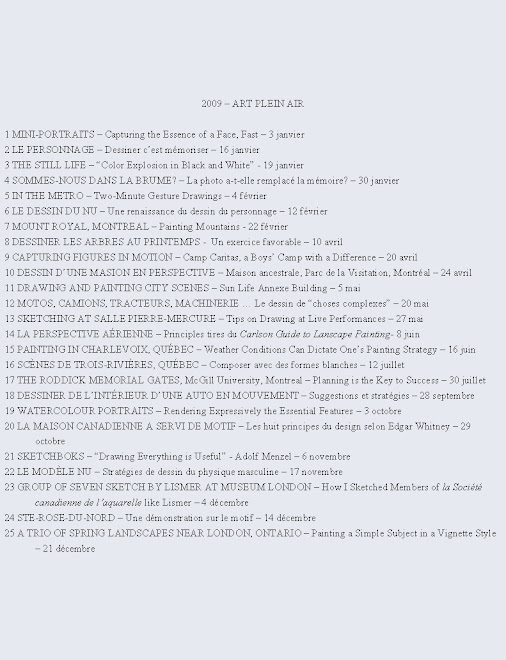
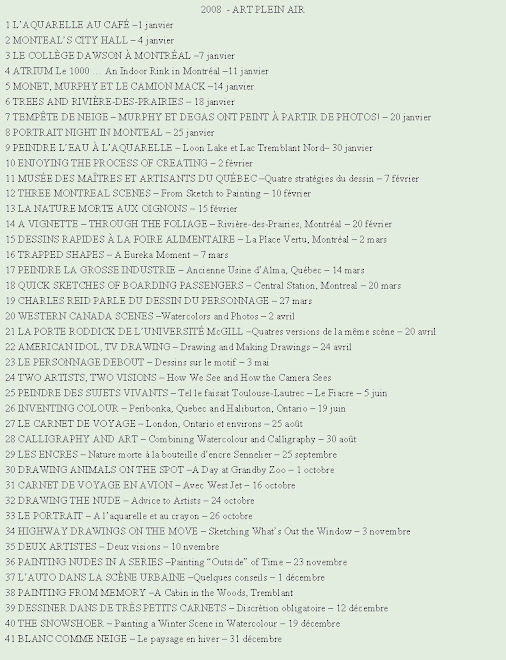
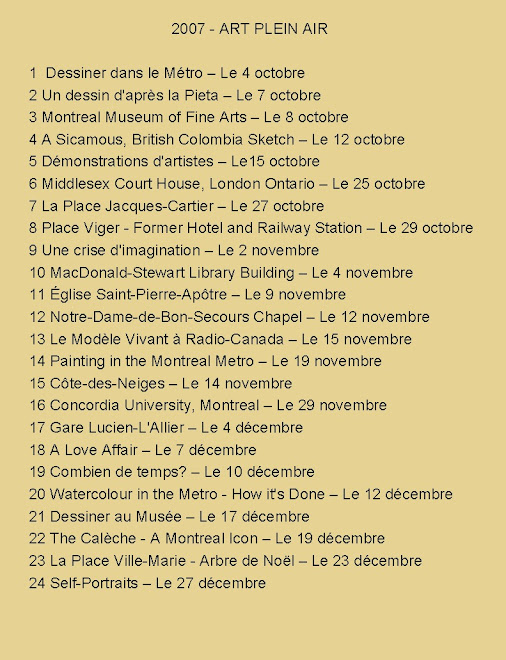



Aucun commentaire:
Enregistrer un commentaire